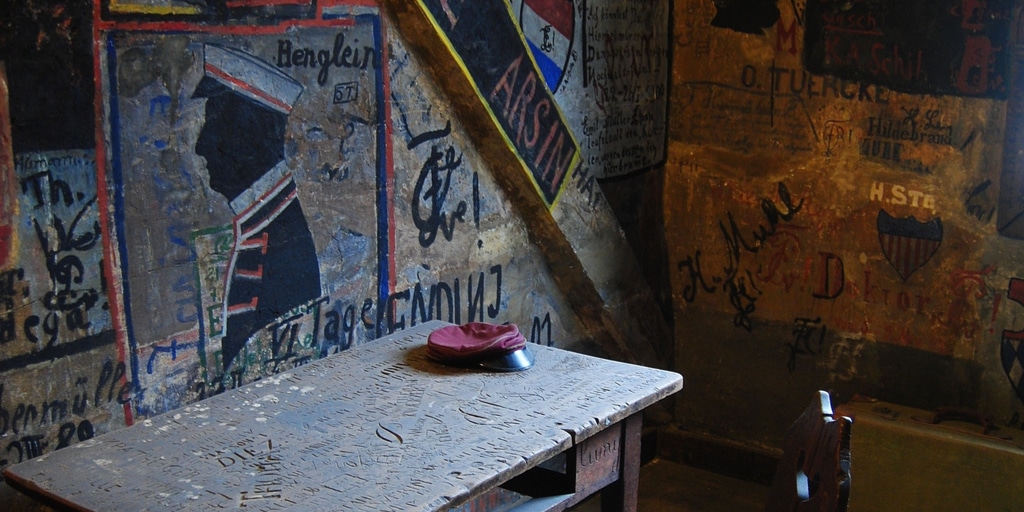- Home ›
- Germany ›
- Heidelberg
For those who would like to experience a particularly vivid relic of past academic jurisdiction, a visit to the Studentenkarzer of the Ruprecht Karls University in Heidelberg's Augustinergasse, not far from the old town's Universitätsplatz, is recommended.
A Karzer: What is that actually?
Jurisdiction in the German states was characterized by a variety of peculiarities. For example, there were special courts for nobles, church members or even soldiers. Likewise, teachers and students at universities were often not subject to the general criminal jurisdiction, but since the Middle Ages to the academic jurisdiction. At some university locations, this jurisdiction even suspected capital offences.
In the course of time, however, the importance of the Academic Jurisdiction increasingly declined. The universities lost their actual criminal jurisdiction in the late 1870s. However, until the beginning of the 20th century, many universities, such as Göttingen or Heidelberg, punished violations of the disciplinary regulations with short-term, non-honorable detention in prison cells ("Karzer").
For many students it was considered a fun must to have served time in the Karzer at least once during their studies for drunkenness, nude bathing, "mean pub crawling" or forbidden fencing. Prison conditions were tolerable, at least in the final stages of the Karzer. Visits from friends were allowed, food could be ordered from outside. Students were also allowed to attend their lectures. The last time a student had to serve his sentence in the Heidelberg Karzer was in 1914. In 1920, the institution of the Karzer was also formally abolished in Heidelberg.
Early graffiti culture
The Karzer in Heidelberg, which is now run by the Museum of the History of the University, is one of the most popular sights in the Neckar city, with around 40,000 visitors a year. Mark Twain visited the Karzer on his trip to Germany in 1878. In the five small cells, which can be reached via a staircase and a corridor, beds, chairs and tables give a vivid impression of the living conditions of the prisoners.
During guided tours, visitors can learn all kinds of anecdotes about the state of mind and debauchery of earlier generations of academic youth. Particularly interesting are the many names and sayings written on the walls of the prison, with which the inmates immortalized themselves. The numerous coat of arms paintings and the student heads depicted in silhouette style are also striking.
There are also a number of portrait photographs. It was customary for the drawings and photos to include references to the respective student fraternities of the inmates, which were obligatory at the time. Almost all of the murals date from the Wilhelmine period.
Tickets and prices
There is a combined ticket for the Studentenkarzer and the University Museum- Adults: 3,- €
- Reduced: 2,50 €
- Reduced admission with the Heidelberg Card




